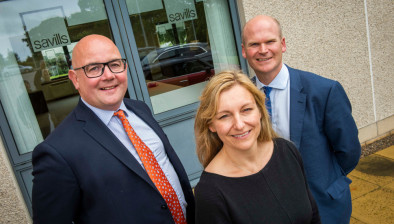Savills: Scottish residential market ‘resilient’ and set to outperform the wider UK market

The Scottish market has so far proved to be ‘resilient’ this year in the light of settling mortgage rates, according to Savills.
Speaking ahead of his presentation to a 400-strong real estate audience at the Scottish Property Outlook Conference in Edinburgh today, Faisal Choudhry, Savills head of residential research in Scotland said, despite economic turbulence, agreed sales activity in the first two months of the year has been above pre-pandemic levels.
Mr Choudhry commented: “We are witnessing a ‘a price sensitive market’ as buyers exercise more caution due to stretched affordability. The prime residential market in Edinburgh and wider prime markets across Scotland will outperform as they are largely driven by equity rather than borrowing.
“Whilst the overall UK market will remain challenging this year, Scotland’s value gap, quality of life and the strength and depth of Edinburgh and Glasgow’s economies means that there is more capacity for growth. I expect the Scottish market to remain resilient for the remainder of 2023 and to improve in the medium term. We forecast that the Scottish housing market to be primarily driven by needs-based buyers in the short term, with a combined five year growth rate of 9.5% by 2027, outperforming the UK figure of 6.2%.”
He said a flood of new properties launched to the Scottish market last year, as sellers rushed to take advantage of the strong run of price growth, but this has now has steadied, with supply reducing to pre-pandemic levels.
He continued: “We are now seeing healthy level of supply and demand and a well-functioning market, rather than the overheated one that characterised the pandemic in Scotland’s towns and cities.”
”What happens next depends on economic outlook. According to Oxford Economics, the BoE base rate has yet to peak, but is likely to level off by the end of this year, before being gradually reducing once inflation has been tamed, suggesting variable rate mortgages will rise further over the course of 2023. This will make moving house more expensive for some buyers in the short term.
“Having said that, the vast majority of borrowers currently choose mortgages with a fixed rate and bank lending rates for fixed rate products are continuing to reduce. However, affordability is likely to remain stretched for the remainder of the year leading to annual price falls this year of up to 9% by the close of 2023 compared to the end of 2022, but that is set against a rise of over 20% since March 2020.”
Mr Choudhry concluded: “We anticipate mortgage rates and inflation to settle and a marked improvement in affordability, attracting more buyers and a return to modest house price growth next year. Our Scotland forecast is for 9.5% five year growth by 2027, outperforming the UK figure of 6.2%.”
Harry Maitland, a director in the Savills residential sales team, said: “We have had a much better start to this year than expected. The number of new buyers registering with Savills to buy a Scottish property in the first two months of 2023 was 51% higher than the same period of 2019 before the pandemic.
“While prime city addresses are proving the most resilient, despite life going back to normal and many returning to the office, country and village houses remain ‘on trend’. This now appears to be more focussed on commutable addresses with top-performing local schools. Our latest survey of prospective movers confirmed that access to outdoor space, and a home office are still the two leading requirements on buyers’ wish lists.”









